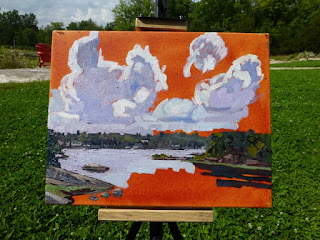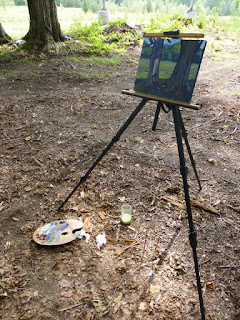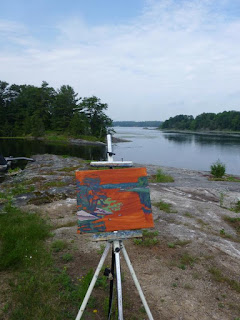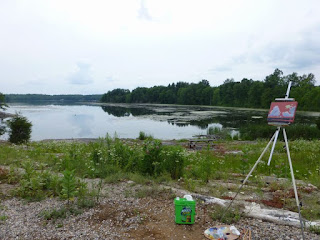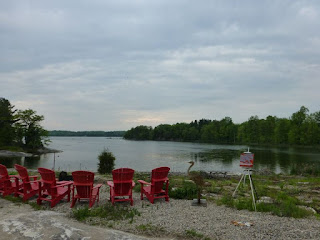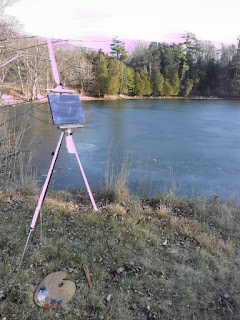 Started 4 pm Monday June 10th, 2013.
Started 4 pm Monday June 10th, 2013.Rain was certainly on the way. The shelf of clouds on the horizon was there because rain was falling just to the west. The rush of air downward with the rain was lifting the convectively unstable mass of air upward to saturation causing the shelf to develop. The knuckles on the edge of the cloud shelf are indicative of the strength of the air movement and in this case, the instability. I figured I had over an hour to lay in the shapes and colours. Would it be enough time? A raven flew by so I sketched it in. I admire the "Einsteins" of the bird world.
It started to rain fairly hard at 5:15 pm. I retreated to the studio.
It rained all night and most of the following day. The upper jets used to blow strongly from west to east and usher lows eastward on their way. With a warmer Arctic the upper flow is weaker and now meanders like the twisted flow in a flood plain - "ox-bow lake lows". Slow moving systems will become more common and linger for days.
http://fineartamerica.com/featured/rain-clouds-phil-chadwick.html



